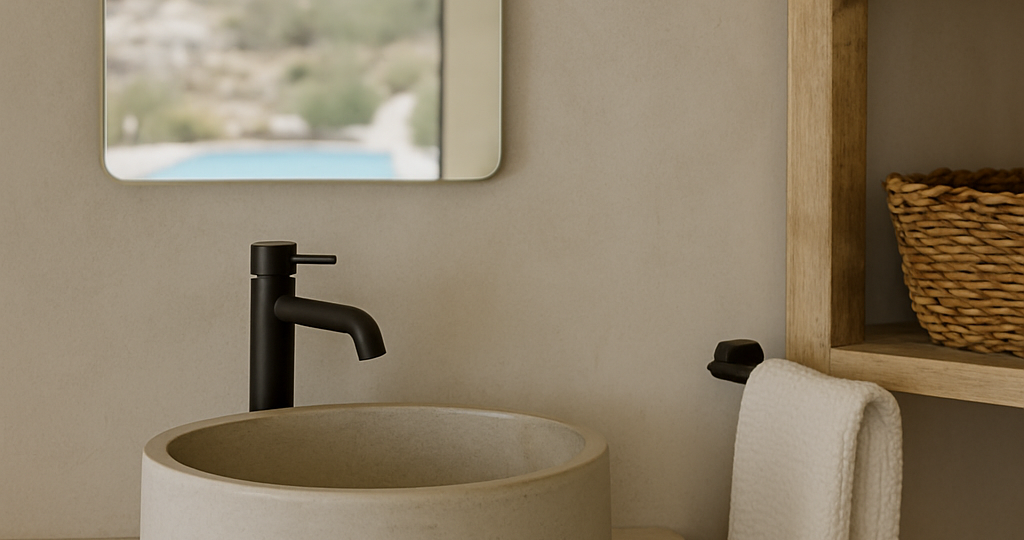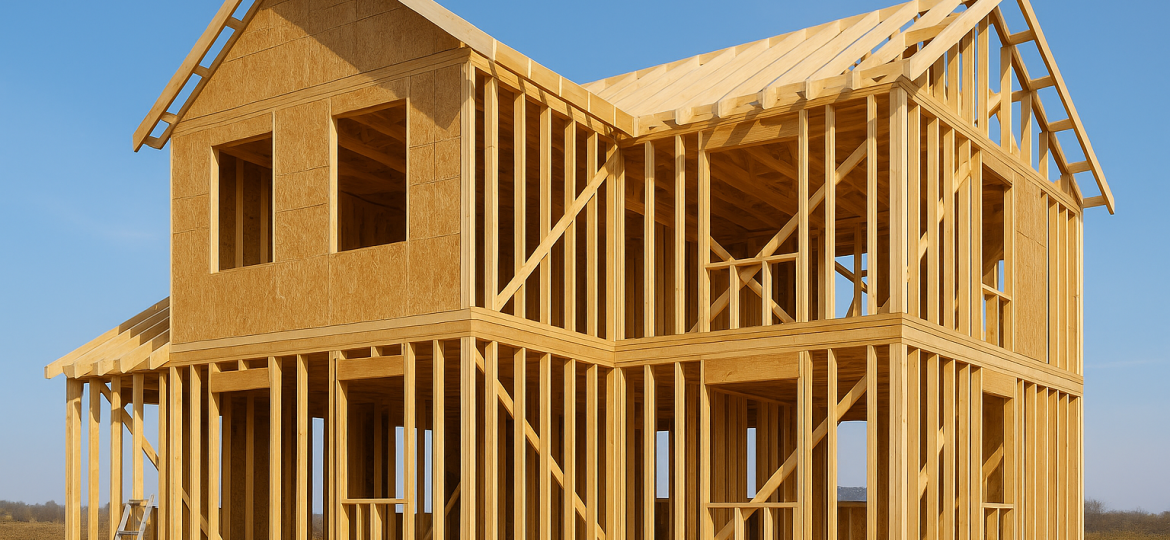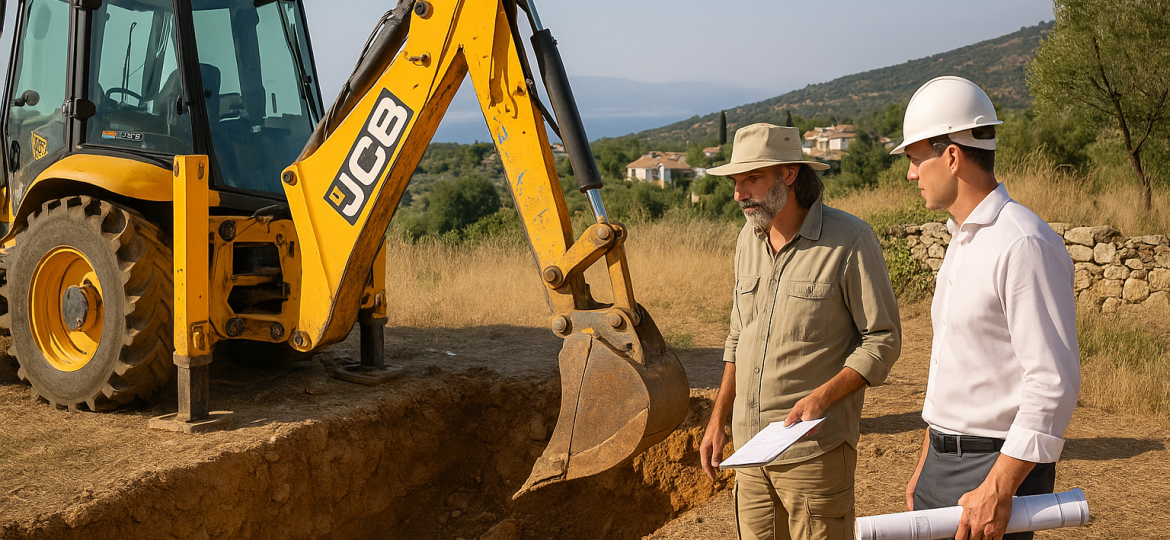Are you dreaming of renovating a traditional villa in Crete, restoring a stone house in Corfu, or adding a stunning pergola to your summer retreat in Mykonos? Before you pick up the tools, it’s crucial to know when you need a small-scale building permit — or risk delays, fines, and endless bureaucracy!
In this guide, we break down when a small-scale permit is needed — and how to make your island renovation a dream, not a nightmare.
What Is a Small-Scale Building Permit in Greece?
A small-scale permit is an official authorization for “light” construction works — not full new builds — that still require some regulatory oversight. It’s faster and easier to obtain than a full building permit, but still mandatory for many renovation activities.
Why does it matter? Without it, even minor works could be stopped by municipal inspectors, leading to fines and even legal complications — especially in high-profile regions like Crete, Corfu, Santorini, or Rhodes.
Common Works That Require a Small-Scale Permit
You WILL need a small-scale permit if you’re doing any of the following:
- External painting — if scaffolding is used.
- Facade cladding or replacement of external surfaces — even stone or plaster repairs.
- Pergola construction — larger than 50 square meters or located on rooftops, terraces, balconies.
- Geotechnical investigations — like soil sampling or trial boreholes.
- Demolition of unsafe, dangerous structures — partial or total.
- Installation of small renewable energy systems — solar panels, small wind turbines.
- Temporary wooden structures — like tool sheds or auxiliary spaces (up to 8 sq.m.).
- Placement of prefabricated housing units — especially common for agricultural or tourism support facilities.
Works That Do NOT Require a Permit
You can proceed freely (no permit needed) for:
- Interior painting or simple decoration.
- Minor repairs inside the property — not affecting the structure.
- Exterior painting without scaffolding (i.e., work reachable without setting up platforms).
Caution: If the total renovation budget exceeds €25,000, a full building permit will be required — even for minor works!
Special Considerations for Crete, Corfu, and Other Islands
Renovations in historic and tourist-heavy islands are more tightly controlled. Extra steps may be necessary if:
- Your property is near archaeological sites — requiring approval from the Archaeological Service.
- Your house lies within a protected traditional settlement — where stricter aesthetic and material guidelines apply.
- The property is close to the coastline — needing additional coastal authority clearance.
These regulations are particularly rigorous in regions like Chania (Crete), Old Town Corfu, Oia (Santorini), and Old Rhodes.
Pro Tip: Working with a specialized architecture firm — like ikies — ensures you meet all local and national requirements, while achieving a seamless and spectacular renovation.
How Long Does It Take to Get a Small-Scale Permit?
The timeline for obtaining a small-scale building permit depends on how well-prepared you are — especially regarding design plans and required approvals.
If you already have a finalized design ready, and no extra approvals are needed, the typical process looks like this:
-
Preparation of documents: 1–2 weeks
-
Submission: Immediate
-
Approval by Municipality: 5–7 business days
Total estimated time: Around 3–4 weeks from start to finish.
Important Notes That Can Affect Your Timeline:
-
If a design must be created first: Add 2–4 additional weeks.
-
Architectural Committee approval: Needed if your property is in a traditional settlement; add 1–2 months.
-
Archaeological Service approval: Needed if your property is near or within an archaeological zone; add several months or more, depending on the local department’s workload and complexity of the project.
-
Coastal Authority approval: Needed if your property is within 100 meters of the coastline; Processing times vary and may range from a few weeks to several months, especially in areas where coastline boundaries are unclear or pending formal designation.
Renovating in Greece? Get It Right from the Start
If you’re considering any renovation project in Crete, Corfu, or any Greek island, understanding when a small-scale building permit is needed can save you time, money, and headaches.
At ikies, we specialize in boutique renovations across the Greek islands, handling every step from design to permitting to construction. Let us bring your Greek dream home to life — legally, beautifully, and stress-free.
Contact us today for a free consultation and start your renovation journey with experts who know every stone, every law, and every breathtaking detail of Greece.



6 Comments
Hi
I have an old olive press in Agrillas in NE Corfu.
I do not have 20m of road frontage.
I would like to build a small pool (7x5m). Will I be able to without the road frontage??
Yes!
I like to build a small cob/mud house eco freindly in my olive groove in Greece like a shepherd hut . What permission do i need to for this ? land is agricultural
A cob/mud house, even if eco-friendly and small, is legally considered a permanent building in Greece. That means:
If you want to use it as a residence → you need a full Building Permit (Άδεια Δόμησης), with architectural, structural, and engineering studies.
If you want it only as a farm hut/storage → you may be able to apply for a permit for agricultural use, but it must be clearly justified (e.g. storage for olives, tools, or farm equipment).
Because your land is agricultural, you cannot just build without permits. Any construction without approval will be treated as αυθαίρετο under Ν. 4495/2017 and risks fines or demolition.
If you’d like to know exactly what you can and cannot build, send us your survey map (τοπογραφικό). With that, we can review the legal status of your land and advise what type of hut or structure can be approved.
I want to build an elevated Tree house In the hills of corfu supported by tree but also tabular steel fram and pillar 4 of them 2 mt from the ground and over all hight including the tree house is 7 mt from the ground .the over all size if the tree house is 4m by 5 mt and will gaveca bathroom and electricity, build of prefabricated wood .
What license do o need .its in my garden of 5000 sq mt and I have a 145 sq house o. The land .how do I go about it .
Thanks for your question!
What you’re envisioning sounds like a truly magical project—an elevated treehouse retreat in the hills of Corfu. Who wouldn’t want that?
However, I need to be upfront with you: under current Greek building laws, your proposed structure wouldn’t be approved in its current form.
Here’s why:
* Height Limitations: At 7 meters, it exceeds legal limits for auxiliary or garden structures.
* Structural Classification: With steel supports, plumbing, and electricity, it’s considered a permanent-use structure—triggering full permitting requirements.
* Architectural Review: The local Architectural Committee (Σ.Α.) must review your design, and elevated, tree-supported constructions are rejected due to environmental and visual concerns.
What can be done?
There may be legal pathways to achieve a similar result—perhaps through a reconfigured structure or adjusted siting—but it requires careful review of your specific land conditions and local regulations.
We specialize in exactly this kind of project—unique vacation homes for foreigners navigating the Greek system. Because we combine U.S.-level building expertise with local compliance, we can often find creative and legal ways to make dream homes happen.
If you’d like clarity on what’s truly possible and how to move forward without hitting regulatory dead ends, we’re happy to set up a feasibility review. Just reach out — and we can take it from there.